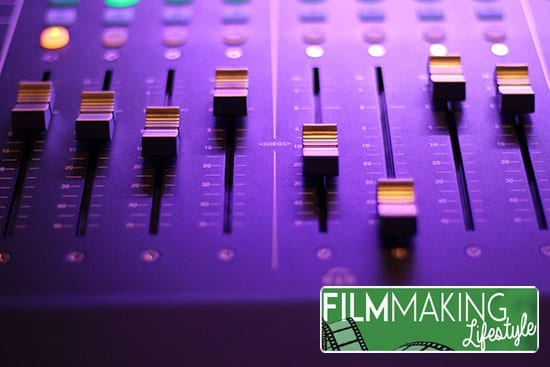Sound effects have been a crucial component in trailers for a long time now. They build atmosphere, help evoke the emotions you wish your audience to feel, and serve as punctuation to the narrative flow of your work.
Some trailers even forego music completely, relying exclusively on the smart use of sound effects to give them the punch they need.
Most producers won’t need to go to such lengths, however, and the tasteful use of a handful of sound effects will be sufficient to make your trailer professional and powerful. Naturally, however, you may be wondering what sound effects you should use and where they should be placed.
This will differ from trailer to trailer, and it will take experience along with plenty of trial and error to find what works. But for those looking for an overview of the fundamentals, here is a primer on the sound effects you will frequently come across and how they’re best used.
Hits
One of the most immediately recognisable ‘movie’ sounds you’ll encounter, the hit is a ubiquitous addition to any trailer that is designed to get the heart racing. Hits are essentially a very brief, powerful sound with a strongly percussive feel.
While hits often include some traditional percussion in their composition, more often than not they are simply composed of whatever noises sound best together. If it sounds good then throw it in – anything goes!
The key is to make sure your hit has a well-rounded sound. This comes from ensuring it has enough bass, mid and treble to give it plenty of presence, yet without overloading any part to the extent that it becomes muddy. Beginners take note – high and low pass filters are your friend here.
Impact
Imagine a hit but…longer. That’s the best way to imagine impacts.
They’re essentially huge hit sounds with a long tail that work to accentuate your trailer a bit more effectively than a standard hit. While they’re usually used in conjunction with the classic hit to mix things up and give your production more flow, they have many other uses too.
Because of their power, impacts are particularly useful when placed in the intro to kick things off with force. They should be used sparingly, however, as you need to keep some of that power for your ending/outro – the places that impacts feel most natural.
Subfall/downer
A thoroughly modern sound effect that has almost become too popular for its own good. The subfall, or downer, or drop, now seems to be the go-to sound effect for every action-oriented trailer in recent times, gracing our ears with that familiar pitch-sink that drops to an inaudible low-end rumble.
Those wondering how they became so popular, however, need only listen to any number of trailers that make good use of them. Often placed between segments of the narrative, a subfall elegantly ends a section while ramping up the drama for the next. Not sure where yours should go? Then slap it at the end for a volcanic trailer finale.
Braam
When you don’t know what to call your new sound effect it’s always a good idea to sit back, listen to the noise, repeat it yourself, then put a bunch of letters together that imitate the sound.
The braam is a perfect example of this, having found itself thrust into the limelight in 2011 thanks to its starring role in the trailer for Inception. Its characteristic dread-filled tones caught on and audiences soon became accustomed to the sound of an angry ship filling their trailers.
The reason it got so popular is pretty evident when you hear it in use. That thick ominous sound can be used multiple times and simply adds weight and tension with each repetition. It may be being phased out in favour of subfalls now, but there could still be a place for a good braam or two in your project.
Boom
If you ever heard a hit and thought it would sound better without the high-end then booms are for you. Take a hit, lose the treble, bring up the bass, and you suddenly have a boom.
Like many sounds here, there are no direct rules about when you should or should not use a boom, but many trailers utilise them for the very beginning. Perfect for grabbing the audience’s attention, those thick low-end frequencies clear the air to leave an ominous emptiness on which to build.
It is also a common tactic to stick a boom in when the movie title and release date appears, giving you two easy structural moments to work from.
Whoosh
Everyone has heard the whoosh plenty of times. It’s the sound of that huge object or force flying by you, apparently within inches of your ears. They vary in pitch and intensity but the general effect is always the same – that feeling of being close to the action.
They’re pretty versatile too. They don’t have to be used only in a climax or build-up, they range from gentle to intense, and they can be layered up with other sound effects to bring out the sensation they are being used for. Love the whoosh but don’t know where to put it? Use a few here and there for simple and effective transitions.
Whoosh-hit
Remember how we just said that you can combine a whoosh with other sound effects for more impact? Well this particular combo is so effective we’ve even given it a heading. The whoosh-hit is, you guessed it, a whoosh and a hit together.
The whoosh is the build-up, and the hit is the payoff. The two effectively work together to harness their individual powers and make something greater than the sum of its parts. Perfect for both transitions and dramatic accentuations.
Riser
The riser is that sound that gradually increases over a section, steadily ramping up the volume and intensity as the tension cranks up with it. Volume, pitch and texture of sound all head upwards with the momentum of a freight train, rising to a nail-biting level.
Used in music as well as film trailers, the riser can be composed of both organic or synthetic sounds, as well as a mix of both, to get the right sound. The duration can likewise change drastically too, with risers being available for as long or briefly as you need (most last 10-20 seconds).
Due to them being a slower tension building tool they generally work best in the first half of the trailer, though this shouldn’t rule out their inclusion in later parts if it works.
Drone / Atmosphere
The drone is a bed of constant and deeply pulsating noise on which the rest of the sound and visuals sit. It may be one note or more, it may be somewhat melodic or it may be a wall of unsettling chaos.
Either way it should create a foreboding atmosphere that sets up the action or drama to unfold. It can also work as a fine backdrop to your outro, giving the audience that same feeling of dread to both start and end on.
Sound Effects In Your Trailer – Wrapping Up
Utilising sound effects in your trailer is a skill like any other, and as with every skill it needs time, patience and practise to serve you best. You may find the material you work with fits certain effects better than others, or you may even develop a style that pushes you to utilise effects in unusual contexts and scenarios.
Whatever it is, no amount of reading will beat taking action. So dive in, get experimenting, and see which effects bring your work to…



